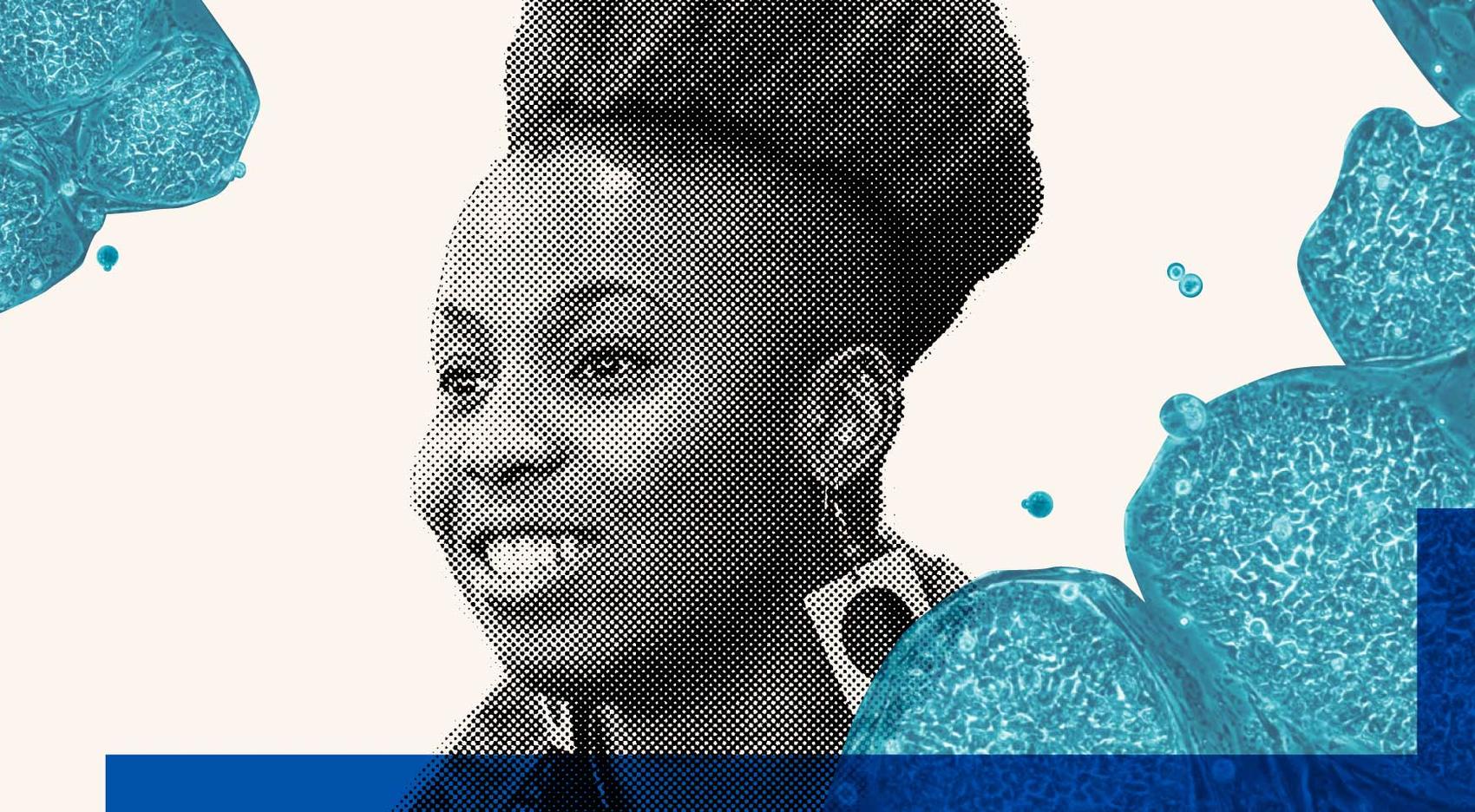Toward a cure for diabetes
By Carolyn Ali

Focusing on stem cells could lead to a therapy without insulin injections
Priye Iworima is passionate about problem-solving — and she’s tackling a big one. “Our ultimate goal is to create a functional therapy for diabetes, which could cure the disease,” she says. “People living with diabetes likely would not need insulin injections anymore because those insulin-producing cells would help control their blood sugar levels.”
A PhD student in the UBC School of Biomedical Engineering, Iworima is working with Professor Timothy Kieffer to develop protocols for the conversion of stem cells into beta cells, or the cells in the pancreas that produce and secrete insulin. If successful, such protocols may one day be used to generate a functional cure for diabetes.
UBC caught up with Iworima to learn more.
Why does your research matter?
If our research is successful, the impact would be unbelievable. The peace of mind for anyone living with Type 1 diabetes and their family members who worry about them — I’m motivated to make a tangible difference in people’s lives.
Stem cells are a particular kind of cell that has the potential to become any of the 206 cell types in the body. We want to use those cells to make them insulin-producing cells. A person living with Type 1 diabetes, who has either dysfunctional or no insulin-producing cells, could have these cells implanted into them as a form of replacement therapy.
“If our research is successful, the impact would be unbelievable. The peace of mind for anyone living with Type 1 diabetes and their family members who worry about them — I’m motivated to make a tangible difference in people’s lives.”
Priye Iworima, UBC School of Biomedical Engineering
What drives you to work for a cure?
Most people living with Type 1 diabetes take insulin injections to control their blood glucose multiple times a day. They have to keep track of the carbohydrates they consume and decide how much insulin to inject for every meal — they can never take a break.
Most people living with diabetes can sense if they’re getting tired and need to eat something or if their blood glucose is too high and they need to inject insulin. But people living with brittle diabetes can’t sense when their blood sugar is low. That’s very dangerous. Think about parents whose kids live with this hard-to-control diabetes — when they go to bed they don’t know what will happen to their children while they sleep. What if their blood sugar drops really low? They may never wake up.
Some people can’t afford their insulin, and when they can, they don’t dose it properly. They reduce their dose because they need insulin to survive and they are trying to make it last longer. If we can find a solution where they don’t need to constantly inject insulin, that would have a huge impact on their lives. We could help them not to have to live with that fear. We would free people living with diabetes from having to think about their condition all the time.
What keeps you inspired along the way?
I love problem-solving, and this is an area where there’s a lot of exciting research. There are so many things we can learn from these cells and questions I could potentially answer. The challenge is, are we asking the right questions? Are we using the right tools to answer those questions? That’s where it gets tricky. It’s one giant puzzle we’re trying to solve with the ultimate goal of one day curing diabetes.
Not only are we trying to make stem cells into insulin-producing cells, but I’m also trying to figure out how to make the manufacturing side of it scalable. Making the cells in a lab is one thing, but making them available on a larger scale: that is the key.
Originally published September 2019.
Did you know?
- Diabetes ranks in the top 10 causes of death worldwide due to the potential development of complications such as cardiovascular disease, neuropathy and blindness (World Health Organization)
- As of 2016, 422 million adults have diabetes. That number is expected to rise to 629 million by 2045 (World Health Organization)
Carolyn Ali is a writer for UBC’s Brand and Marketing.
Feel free to republish the text of this article, but please follow our guidelines for attribution and seek any necessary permissions before doing so. Please note that images are not included in this blanket licence.


